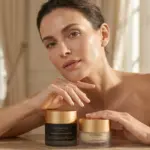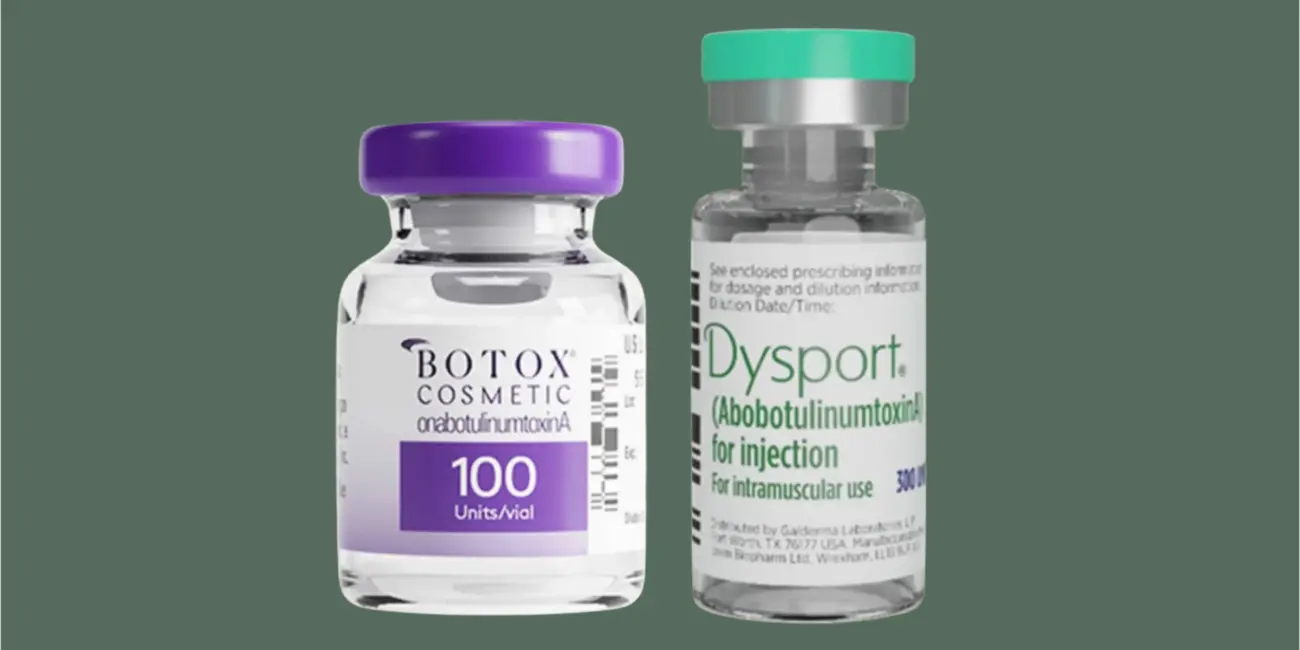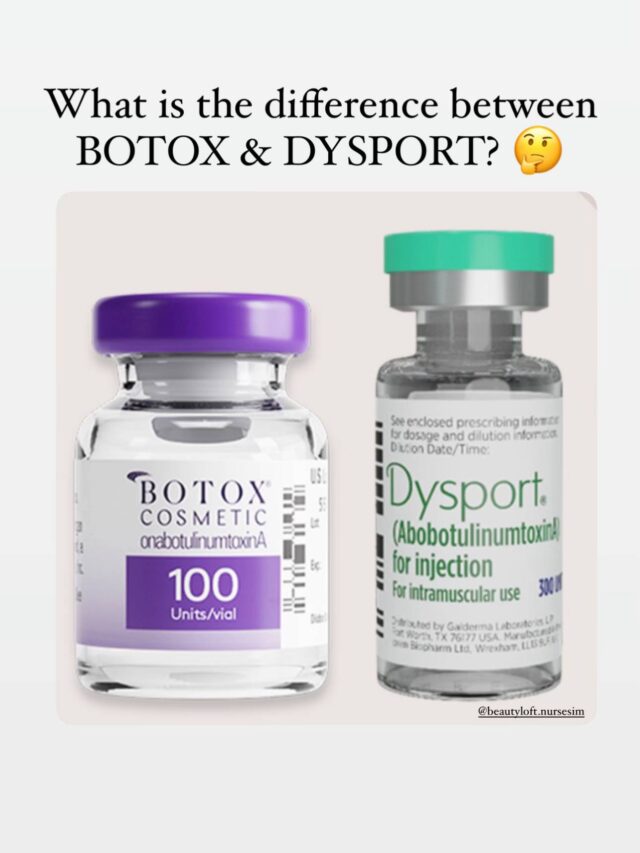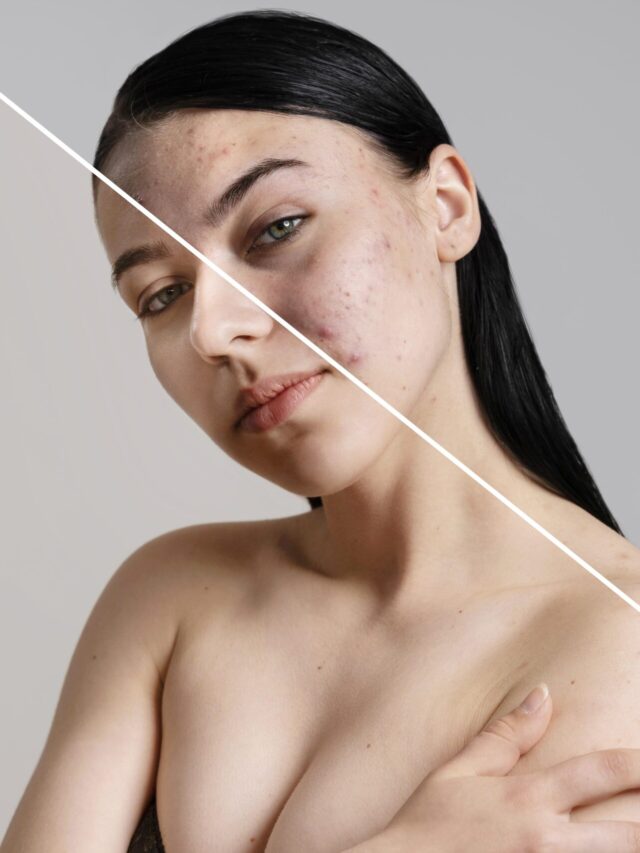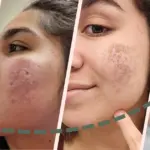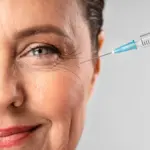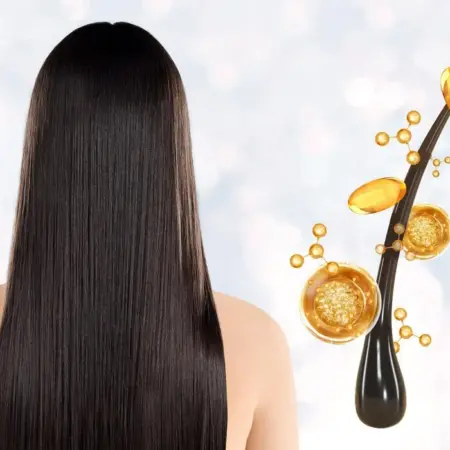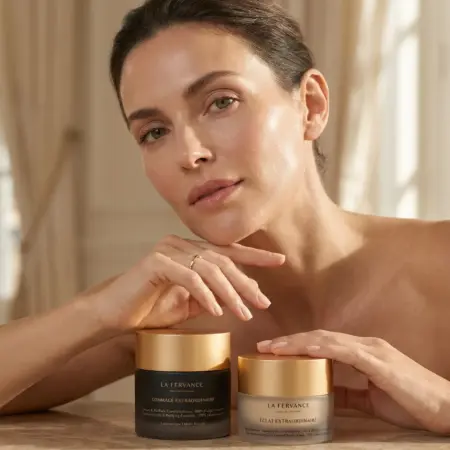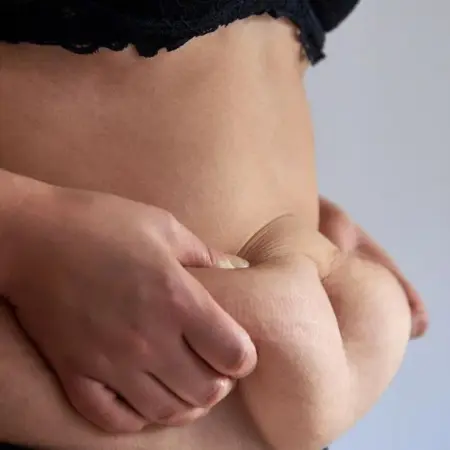Curious about the real difference between Botox vs Dysport? You’re not alone — it’s one of the most asked questions by people in Delhi looking for smoother, younger-looking skin without surgery. While both are popular anti-wrinkle injections, they aren’t exactly the same — and choosing the right one can make a big difference in your final look.
In this quick guide, you’ll learn exactly how Botox and Dysport work, what sets them apart, and which might be the better fit for your goals. If you’ve been wondering which option will give you the most natural, long-lasting results, keep reading — we’ll clear up the confusion so you can make the best choice for your skin!
Table of Contents
What is Botox?
Botox is the world’s most well-known brand of botulinum toxin type A — a purified protein that’s been trusted for decades to smooth fine lines and wrinkles without surgery. First approved by the FDA for cosmetic use in 2002, Botox works by temporarily relaxing targeted facial muscles that cause dynamic wrinkles — the lines that appear when you frown, squint, or smile.
By blocking nerve signals to these muscles, Botox softens their movement, allowing the skin above them to appear smoother and more youthful. It’s especially popular for treating forehead lines, frown lines between the eyebrows (the “11 lines”), and crow’s feet around the eyes.
One of Botox’s biggest benefits is how natural the results look when injected by an experienced doctor — you still look like you, just more refreshed and well-rested. Treatments are quick, convenient, and require little to no downtime, making Botox a top choice for busy people who want subtle yet visible anti-aging results.
What is Dysport?
Dysport is another trusted brand of botulinum toxin type A, similar to Botox, and it’s been used worldwide for decades to smooth out facial wrinkles and fine lines. Approved for cosmetic use in Europe in the early 1990s and by the FDA in the U.S. in 2009, Dysport works by temporarily blocking nerve signals to targeted muscles, which reduces their movement and softens dynamic wrinkles.
One unique feature of Dysport is that its formula spreads a bit more easily under the skin compared to Botox. This can make it a great option for treating larger areas like the forehead or when you want a more diffused, natural softening effect.
Just like Botox, Dysport treatments are quick, convenient, and require minimal downtime — so you can get back to your day right after your session. Many people love Dysport for its fast-acting results and subtle, refreshed look that keeps facial expressions natural while smoothing out lines and creases.
Key Differences Between Botox vs Dysport
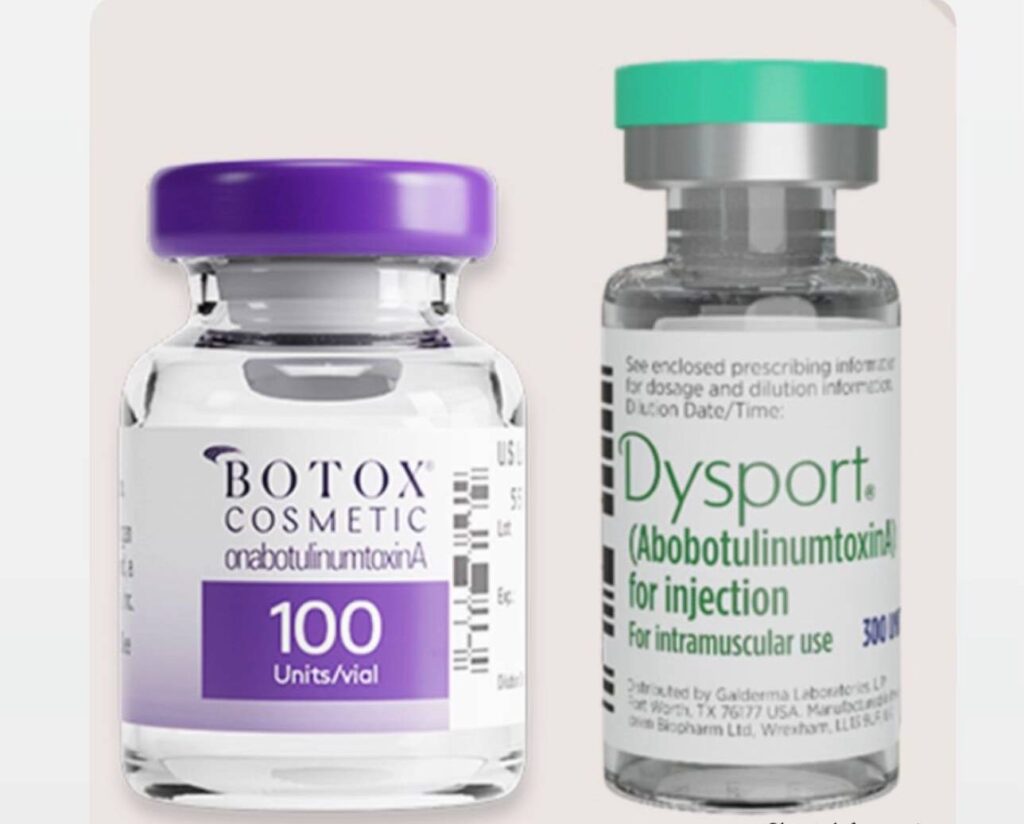
Botox and Dysport are both excellent choices for smoothing fine lines, but they’re not identical — knowing the differences helps you pick what’s best for your skin goals.
In simple terms, both work by relaxing the tiny facial muscles that cause wrinkles. But they have a few subtle differences:
- Formula Spread: Dysport’s formula tends to spread a bit more under the skin than Botox. This means Dysport can be a better option for treating larger areas like the forehead or horizontal lines that cover more space.
- Unit Measurement: Botox and Dysport are measured in different units, so 1 unit of Botox does not equal 1 unit of Dysport — your doctor adjusts doses accordingly.
- How Fast They Work: Dysport may show results slightly faster (2–4 days) than Botox (3–7 days), though both reach peak effect around 2 weeks.
- Look & Feel: Both give a natural result when done well. Some clients feel Dysport looks a bit softer for larger areas, while Botox can be more precise for small zones like crow’s feet.
So, the right choice often comes down to the area you want to treat and your injector’s recommendation.
Which Areas Do They Treat?
Botox and Dysport are both designed to tackle dynamic wrinkles — the lines that form from repeated facial expressions like frowning, squinting, or raising your eyebrows. While they work in similar ways, some people prefer one over the other for certain areas, depending on how the product spreads under the skin and how natural they want the results to look.
Here are the most common areas you can treat with Botox or Dysport:
- Forehead Lines: Smooths out horizontal lines caused by raising your eyebrows, giving you a younger, well-rested appearance.
- Frown Lines (Glabellar Lines): Softens the deep “11 lines” between your eyebrows that make you look angry or stressed.
- Crow’s Feet: Reduces the fine lines around the outer corners of your eyes that appear when you smile or squint.
- Bunny Lines: Minimises tiny wrinkles on the sides of your nose when you laugh or scrunch your face.
- Eyebrow Lift: Subtly lifts drooping brows for a more open, refreshed look without surgery.
- Jawline Slimming (Off-Label Use): Some people use Botox or Dysport to relax bulky jaw muscles for a slimmer face shape.
When done by a skilled injector, these treatments don’t just smooth lines — they help you feel more confident, look naturally youthful, and stay ahead of deeper wrinkles forming over time.
How Long Do Results Last?
One of the reasons people love both Botox and Dysport is that you see visible improvements quickly, with minimal effort and downtime. For most people, Dysport can start showing results a bit sooner — often within 2–4 days, while Botox usually takes 3–7 days to kick in fully. Both reach their best, smoothest effect at around the two-week mark.
In terms of how long they last, both treatments offer results that typically stay visible for 3 to 4 months. The exact duration depends on your unique muscle movement, metabolism, and how consistently you maintain your sessions.
Most people book follow-up appointments 3 to 4 times a year to keep lines soft and prevent new wrinkles from forming. Over time, regular treatments can even “train” your facial muscles to stay more relaxed, which can make the effects last longer and reduce how much product you need in the future.
Cost Comparison in Delhi
When deciding between Botox and Dysport, cost is often an important factor — but remember, you’re not just paying for the product; you’re paying for the expertise, safety, and results too. Here’s a quick step-by-step breakdown of what to expect in Delhi:
- Consultation: Your session begins with an expert consultation to assess your skin, lines, and goals.
- Treatment Plan: Your doctor will recommend the right brand, units, and areas to treat.
- Price Per Unit:
- Duration: Both treatments take about 15–20 minutes.
- Comfort: Minimal discomfort — tiny pinches only.
- Downtime: Almost none. You can return to normal activities right away.
| Brand | Average Cost per Unit | Typical Areas Treated | Total Session Cost (Estimate) |
|---|---|---|---|
| Botox | ₹300–₹600 | Forehead, frown lines, crow’s feet | ₹6,000–₹20,000+ |
| Dysport | ₹250–₹500 | Larger forehead areas, frown lines | ₹5,000–₹18,000+ |
Always choose an experienced clinic using genuine products — your safety and natural-looking results are worth it!
Who Should Choose Which?
Wondering whether Botox or Dysport is better for you? The answer depends on your unique skin concerns and goals.
Botox is often preferred for small, targeted areas like crow’s feet and frown lines, especially if you want precise control and a subtle lift. Dysport, on the other hand, spreads slightly more, making it great for larger areas like a broad forehead or horizontal lines that need a softer, blended look.
Both are suitable for all skin types and tones, and are equally effective for men and women who want to smooth lines without losing natural expressions. Most people start in their late 20s to early 50s, but some younger clients use small doses preventively.
The best choice comes down to your facial anatomy and your injector’s recommendation — so always consult a qualified professional to customise what’s right for you.
Side Effects & Safety
Botox and Dysport are both safe and FDA-approved, but it’s important to know what to expect and how to minimise any risks. When done by a certified, experienced injector, side effects are usually mild and temporary. Here’s what you should know:
Common Side Effects
Most people experience only minor side effects, such as:
- Redness or swelling at the injection site
- Small bruises where the needle was inserted
- Mild headache or tight feeling for a day or two
- Tiny bumps that fade within a few hours
Rare Risks
Serious side effects are rare but possible if injections are done incorrectly. These can include:
- Drooping eyelids or eyebrows
- Uneven results or asymmetry
- Allergic reactions (very rare)
- Temporary weakness in nearby muscles
Safety Tips
- Always choose a certified, experienced doctor who uses genuine Botox or Dysport.
- Avoid cheap, unbranded products.
- Follow your injector’s aftercare instructions, like avoiding lying down flat for 4–6 hours and skipping heavy workouts for a day.
When done right, both treatments are safe ways to smooth lines and boost your confidence.
Client Reviews & Testimonials
Clients across Delhi trust Paradise Wellness for safe, natural-looking Botox and Dysport treatments — and they love sharing their experiences!
“I was confused between Botox and Dysport but my doctor explained everything so clearly. I chose Dysport for my forehead and love how soft and natural it looks!” — Riya M., Vasant Vihar
“Paradise Wellness is my go-to for Botox. My frown lines have disappeared, and I still look like myself, just fresher. Super happy with the results!” — Arjun S., Pitampura
“The team here really knows what they’re doing. I got Botox for my crow’s feet and couldn’t be happier. No frozen look — just smooth skin!” — Simran K., Civil Lines
At Paradise Wellness, our certified experts make sure every client feels confident, informed, and completely satisfied with their results.
FAQs
Still unsure whether Botox vs Dysport is right for you? Here are some of the most common questions clients ask before they book their first session at Paradise Wellness:
Is Botox or Dysport permanent?
No — neither Botox nor Dysport is permanent. Both treatments temporarily relax facial muscles to smooth out wrinkles. The effects typically last 3 to 4 months, depending on your metabolism and muscle activity.
How many sessions are needed?
Most clients start with one session, then return every 3–4 months for maintenance. With regular treatments, you may need fewer units over time as your muscles adapt and stay more relaxed.
Which works faster — Botox or Dysport?
Dysport may show results slightly faster — sometimes in 2–4 days — while Botox typically takes 3–7 days to start working. Both reach full effect around two weeks after treatment.
Does it hurt?
The injections are quick and feel like tiny pinches. Most people find it very tolerable. If you’re sensitive, your doctor can apply a numbing cream beforehand.
Can men get Botox or Dysport too?
Absolutely! More men than ever are using both treatments to smooth frown lines and crow’s feet, keeping their look sharp and well-rested without surgery.
Still have questions? Book a consultation with Paradise Wellness — we’ll help you choose what’s best for your unique skin and goals!
Conclusion
Choosing between Botox vs Dysport doesn’t have to be confusing — both are trusted, safe, and effective ways to smooth wrinkles and refresh your look without surgery. At Paradise Wellness, our experienced team takes the time to understand your goals and recommend the right option for your unique needs.
Whether you want precise results with Botox or a softer spread with Dysport, you can feel confident knowing you’re in safe hands with certified doctors and genuine products. Ready to look naturally younger and feel your best?
Book your consultation today and let’s find the perfect anti-wrinkle solution for you!



